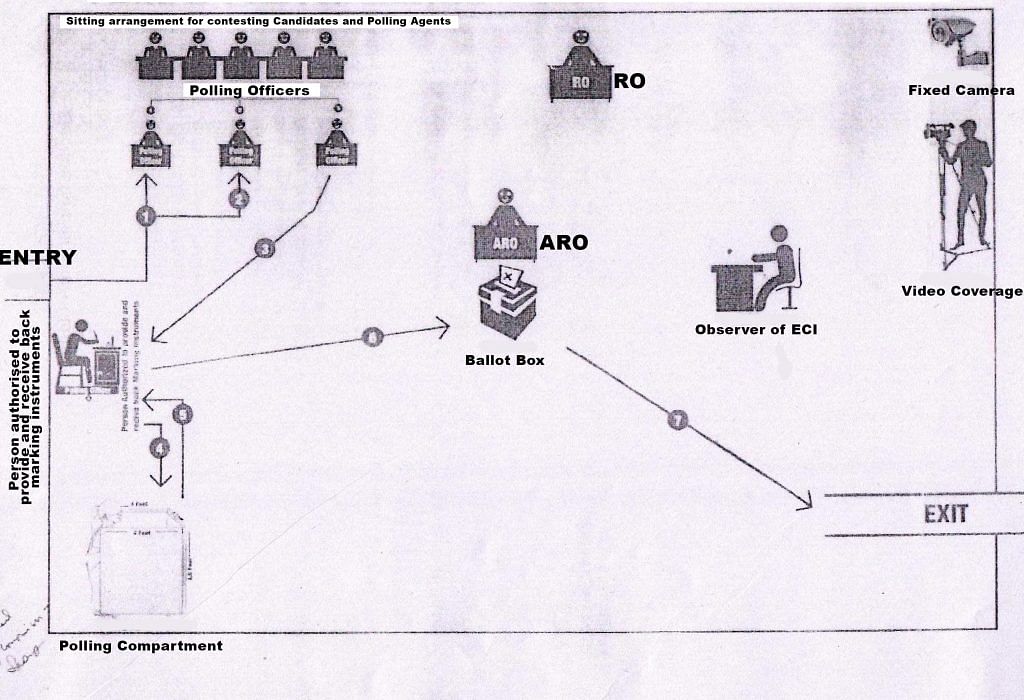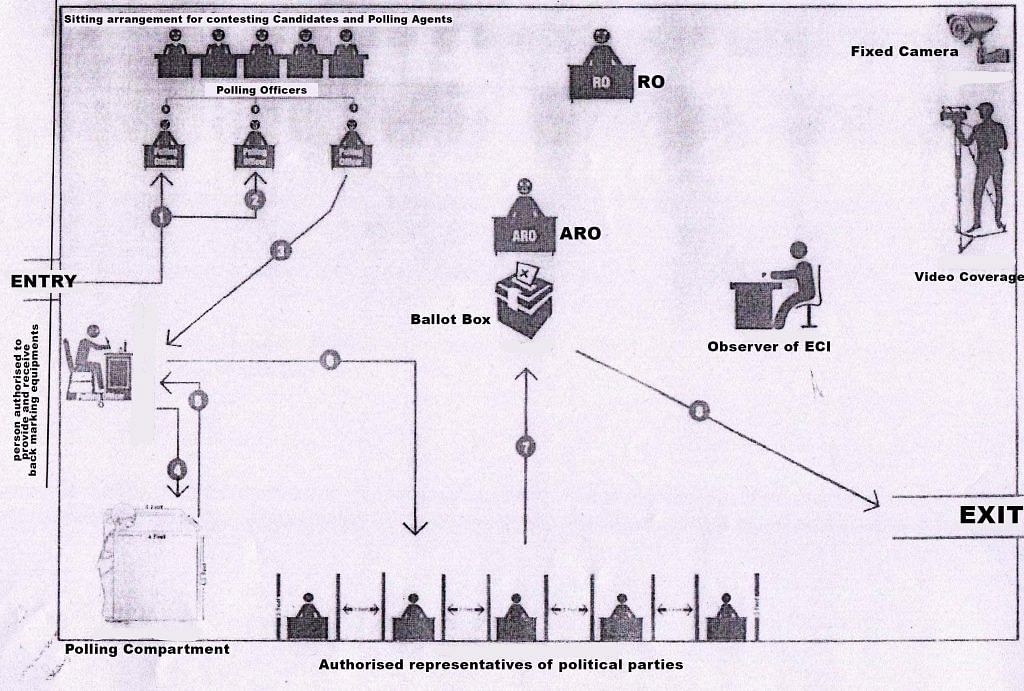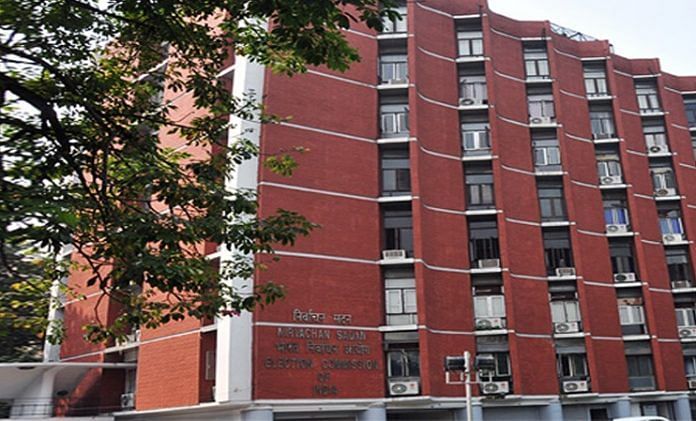After the fracas during the Gujarat Rajya Sabha poll, Election Commission decides on a new polling station layout for future elections.
New Delhi: The Election Commission of India (ECI) seems to have learnt its lessons from the Rajya Sabha elections in Gujarat in August 2017, when two Congress MLAs openly violated the voting procedure despite the presence of authorised electoral staff.
It has decided on a new layout for polling stations, to prevent any recurrence of such episodes that can disrupt the election process.
The violation ultimately led to senior Congress leader Ahmed Patel winning a bitterly-fought battle with a wafer-thin margin.
The ECI has sent communications dated 15 December 2017 to the chief electoral officers of all states and union territories, sharing the new layout design. It has asked for “strict compliance” to the separate layouts prescribed for all future Rajya Sabha and state legislative council elections.
The new layout will ensure that an MLA is able to show his/her marked ballot only to his/her party representative before he/she walks through a secure corridor to put it in the ballot box. It will be first used for polls to 52 Rajya Sabha seats in April this year.
The new layout

As an MLA enters the polling station, his/her first point of engagement will be the polling officers who will be placed in front of the area where contesting candidates and polling agents are seated.
The MLA will then proceed to the desk of the polling officer authorised to provide and receive back-marking instruments, and then head to the polling compartment enclosed in a 4-ft high cubicle-like structure.
From here, the MLA will be able to walk to the area where authorised representatives of political parties are seated. Each party representative will be seated in a cubicle-like structure which is 3-5-ft high, with each cubicle about 2-ft apart.
The MLA will show only his/her party representative the marked ballot, as is permitted, and then proceed to drop the same in the ballot box. Once the ballot is cast, the MLA will move out of the polling area. Fixed cameras and live video recordings will be placed in a way that the exercise is captured closely.

In case of legislative council elections, MLAs will mark the ballot, return to the authorised polling officer, then proceed to cast the ballot in the ballot box, and exit.
The background
The votes of two dissident Gujarat Congress MLAs – Bhola Bhai Gohil and Raghavji Bhai Parmar – were cancelled by the ECI on 8 August 2017 after video recordings of the election clearly showed them violating the voting procedure.
The two MLAs, soon after marking their ballots, made a near-180 degree turn to display their marked ballots to those seated on the other side – purportedly, senior BJP leaders.
Rules 39A and 39AA of the Conduct of Election Rules, 1961, clearly state that the marked ballot paper can only be shown to the authorised representative of the political party to which he/she belongs.
The Gujarat Rajya Sabha elections, for the first time, brought to the fore the possibility of violations by an MLA displaying a marked ballot intentionally or unintentionally to unauthorised persons or rival party members. The ECI, thereafter, had been deliberating on how to ensure the sanctity of the voting procedure in future elections.
Incidentally, this is the second major change made in the Rajya Sabha polling methodology in the last two years. In 2016, Congress-backed candidate R.K. Anand lost in the Haryana Rajya Sabha polls after 14 Congress votes were found invalid on account of using the wrong pen to mark the ballot.
The ECI, in the recent round of elections, had ensured that only special ECI-supplied pens with violet ink were used to mark the ballots. Each MP/MLA was asked to deposit his/her personal pens outside the polling room, to ensure there was no deliberate or unintentional mix up leading to vote cancellation.
Incidentally, in the same election, Congress leader Randeep Surjewala’s vote was cancelled for showing it to someone other than the authorised party representative, although the person in question was from the Congress.



